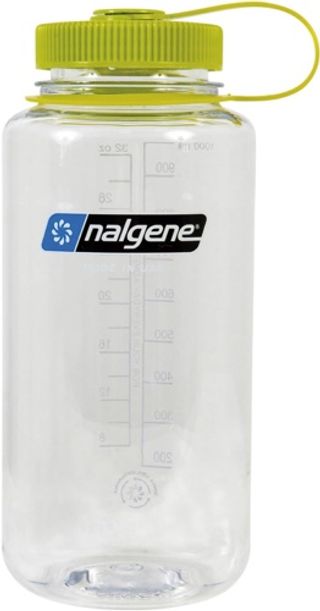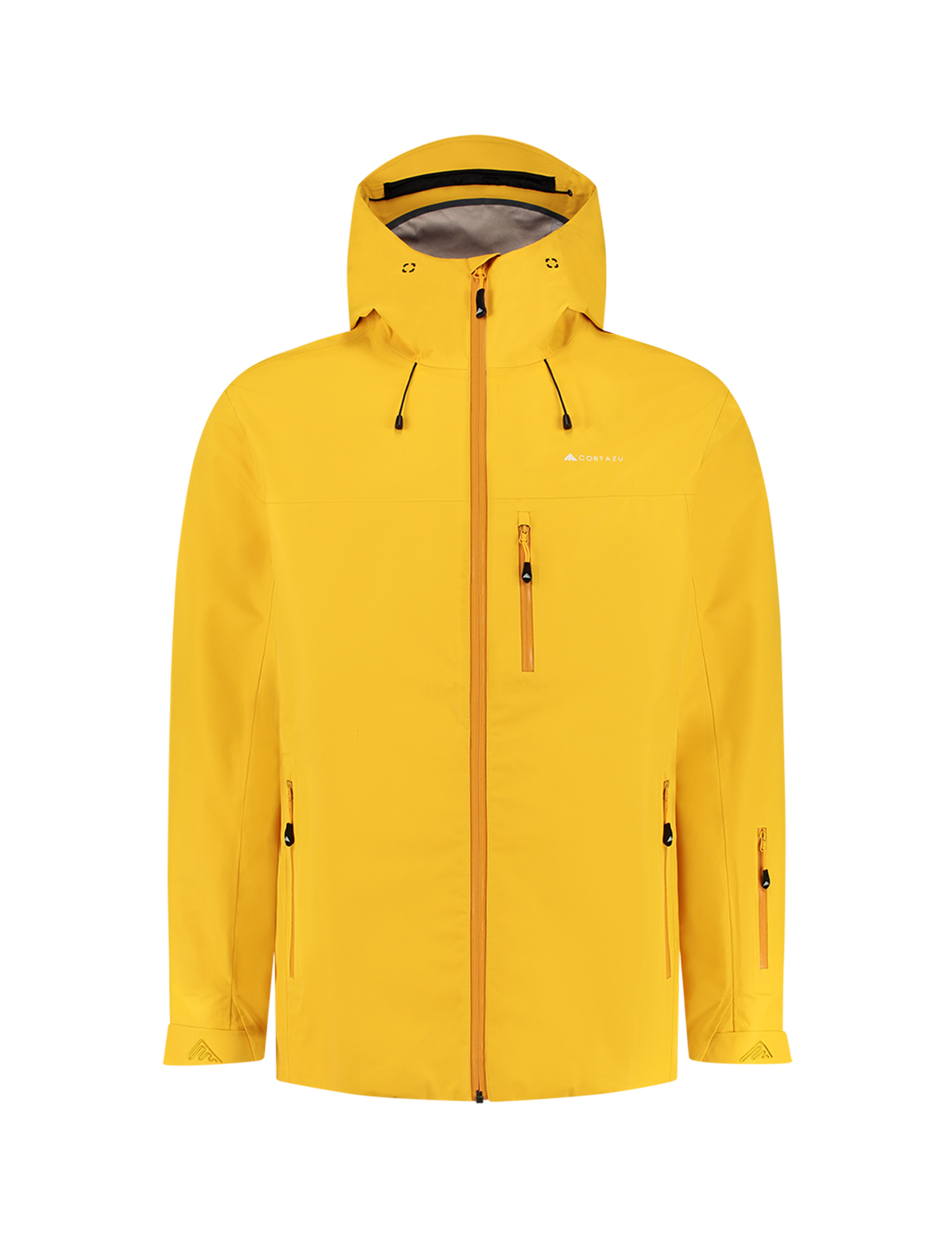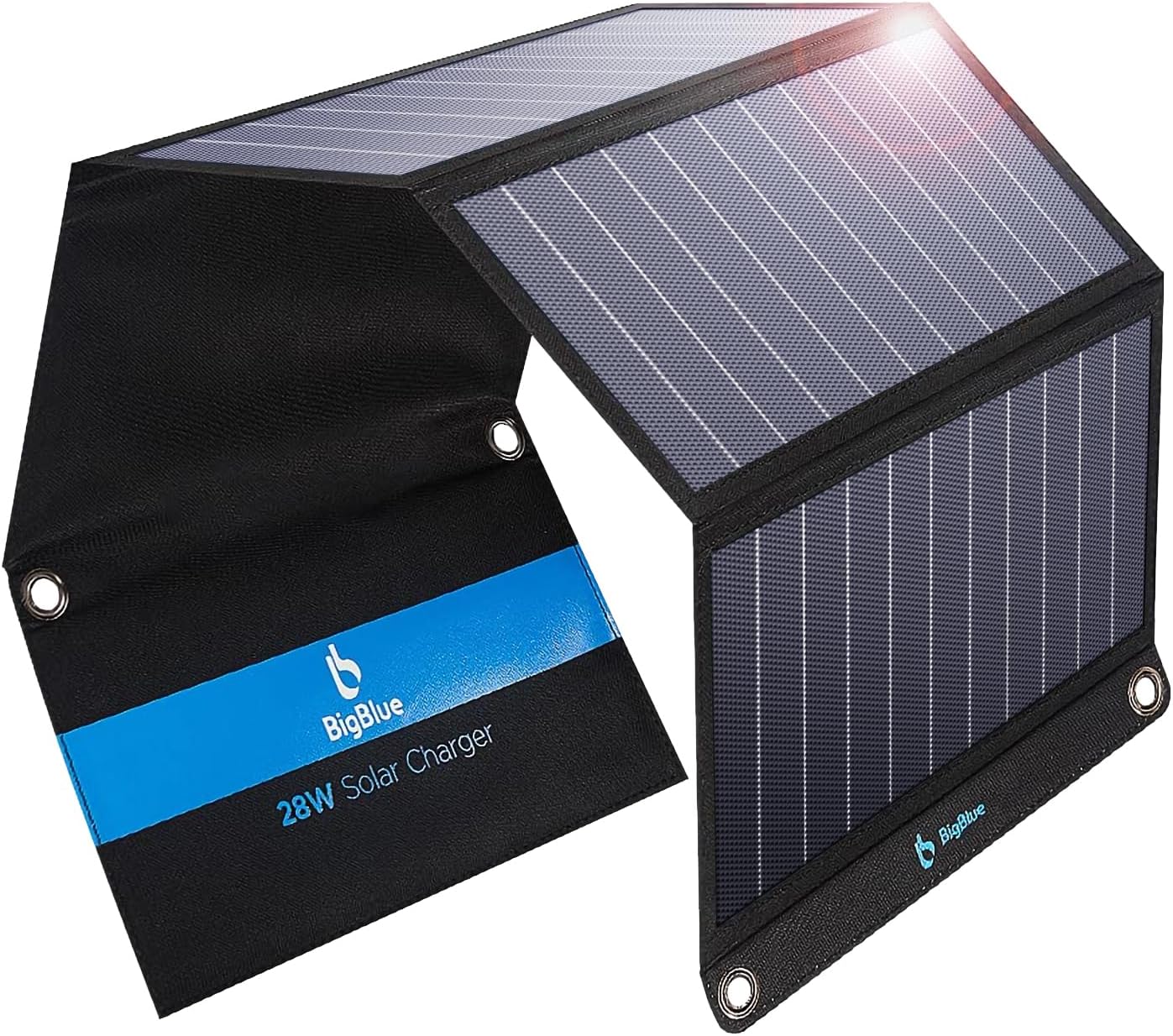How to Hike the Manaslu Circuit
Last updated:
An unforgettable journey awaits you in Nepal on the Manaslu Circuit trek. It's a strenuous walk that takes you through some of the world's most breathtaking and uninhabited regions. As you hike, you'll travel through lush forests, scale lofty mountain passes, and take in stunning vistas of snow-capped peaks. Additionally, you'll get to experience the hospitality and culture of the nearby Gurung settlements. The walk is less crowded than other well-known treks in Nepal, making it the ideal option for those seeking an experience that is more off-the-beaten-path. And the sense of satisfaction after finishing the walk is unsurpassed. So prepare for a once-in-a-lifetime experience by packing your luggage and heading out on the Manaslu Circuit trek!
Quick Links:
Overview
The Manaslu Circuit Trek in Nepal is not just a journey through breathtaking landscapes, but also an opportunity to immerse yourself in the rich culture of the country. During the trek, you will encounter quaint villages and get a chance to interact with the friendly locals, learning about their way of life and customs. One of the highlights of this trek is the visit to the ancient Sereng Monastery, where you can delve into the spiritual heritage of the region and get a glimpse of the daily rituals and practices of the local community. The Manaslu Circuit Trek is a truly unique and enriching experience that combines stunning natural beauty with a rich cultural tapestry, making it a must-do for anyone seeking an authentic and memorable adventure in Nepal.
Essential Information
Permits: To trek in the Manaslu area, you will need a special permit, which can be acquired in Kathmandu. This license, known as the Restricted Area Permit, must be obtained via a recognized trekking organization.
Physical Fitness: The Manaslu Circuit trek is arduous and demands a high level of physical fitness. You should feel at ease spending several hours per day hiking and be ready for rocky, uneven terrain.
Equipment: A top-notch backpack, cozy hiking boots, warm clothing, and a sleeping bag are all things you should have with you on the trek. A first aid kit and a water filter or purification tablets are also smart additions. Check out the gear I bring with me on most of my trips.
Guides and porters: For the Manaslu Circuit Trek, hiring a guide is required. Guides can also assist you in navigating the trail and are a great source of information. Your gear can be carried by porters, which will improve your trek if you aren't capable of carrying your essentials.
Accommodation: During the trek, you will be staying in teahouses. Teahouses are simple lodges that provide basic accommodation and meals.
Food and water: Basic meals are served at teahouses along the trail, but it's a good idea to pack some snacks and a water bottle. To ensure you have safe drinking water, you'll also need to bring a water filter or purification tablets.
Insurance: It's crucial to have travel and health insurance that covers remote high-altitude trekking.
Altitude sickness: You will be at high altitudes during the Manaslu Circuit trek, and altitude sickness is a real possibility. Recognize the signs and be ready to descend if you feel sick.
Communication: It is a good idea to bring a satellite phone or a GPS device because there isn't much mobile network coverage along the trail.
Local Currency: The official currency of Nepal is the rupee. Although you can also pay with US dollars, it's preferable to have rupees in small denominations for the purchase. Bring enough cash in rupees with you for the cost of the trek.
Manaslu Circuit Trek Hiking Trail Map
Learn how to download the map for your own offline use by reading how I navigate on the trail .
Itinerary
The trek typically takes around 14-21 days to complete, depending on the route and your pace. Below is an example 14 day itinerary. If you have extra time, consider adding some of the side trips, stopping by more villages along the way, or taking extra rest days.
Brief Itinerary
| Day | Itinerary | Details |
|---|---|---|
Day 11 | Drive from Kathmandu to Soti Khola | 160km700m |
Day 22 | Trek from Soti Khola to Machha Khola | 17km930m |
Day 33 | Trek from Machha Khola to Jagat | 14km1340m |
Day 44 | Trek from Jagat to Deng | 18km1804m |
Day 55 | Trek from Deng to Namrung | 15km2630m |
Day 66 | Trek from Namrung to Lho | 12km3400m |
Day 77 | Trek from Lho to Samagaun | 8km3520m |
Day 88 | Rest day in Samagaun | 03520m |
Day 99 | Trek from Samagaun to Samdo | 12km3860m |
Day 1010 | Trek from Samdo to Dharamsala | 12km4460m |
Day 1111 | Trek from Dharamsala to Bimtang via Larkya La Pass | 20km5160m |
Day 1212 | Trek from Bimtang to Tilche | 8km2300m |
Day 1313 | Trek from Tilche to Dharapani | 12km1860m |
Day 1414 | Drive from Dharapani to Kathmandu | 190km1400m |
Detailed Itinerary
Day 1: Drive from Kathmandu to Soti Khola
Distance: 160 km
Highest Elevation: 700 km
The Manaslu Circuit trek's starting point is Soti Khola, which is accessible via both a road and a trail. The most popular method of transportation to Soti Khola is by taking a bus or jeep from Kathmandu to the closest roadhead, Arughat. It takes 6-7 hours to walk from Arughat to Soti Khola. As an alternative, you can drive straight from Kathmandu to Soti Khola. The trip could take up to 10 hours due to the poor condition of the road. The most popular method of transportation to get to Soti Khola is a combination of bus and jeep ride.
Day 2: Trek from Soti Khola to Machha Khola
Distance: 17 km
Highest Elevation: 930 km
The first day of the trek takes you along the Buri Gandaki River, passing through charming rural villages and lush tropical forests. You'll have the chance to see stunning waterfalls and maybe even catch a glimpse of some of the local wildlife, including monkeys and birds.
Day 3: Trek from Machha Khola to Jagat
Distance: 14 km
Highest Elevation: 1340 km
The second day takes you up into the higher elevations of the trek, offering views of the stunning mountain landscape. As you ascend, you'll pass through traditional villages, where you can learn about the local culture and way of life.
Day 4: Trek from Jagat to Deng
Distance: 18 km
Highest Elevation: 1804 km
On the third day, you'll continue your ascent and cross several suspension bridges as you make your way to Deng. You'll pass through dense forests and cross streams, taking in the lush greenery of the surrounding landscape.
Day 5: Trek from Deng to Namrung
Distance: 15 km
Highest Elevation: 2630 km
On the fourth day, you'll continue to climb higher into the mountains, reaching the charming village of Namrung. Here, you'll have the opportunity to explore the local culture and maybe even taste some of the traditional cuisine.
Day 6: Trek from Namrung to Lho
Distance: 12 km
Highest Elevation: 3400 km
On the fifth day, you'll head towards the village of Lho, taking in the breathtaking views of the mountains as you go. You'll pass through traditional settlements, cross streams, and trek through lush rhododendron forests.
Day 7: Trek from Lho to Samagaun
Distance: 8 km
Highest Elevation: 3520 km
On the sixth day, the trail takes you from Lho to Samagaun, a large village with a distinct Tibetan influence. The trek follows the Buri Gandaki river and offers scenic views of the surrounding peaks, including the Manaslu range.
Day 8: Rest day in Samagaun
Distance: 0 km
Highest Elevation: 3520 km
Today is a well-deserved rest day in Samagaun. You can take the opportunity to explore the village, visit the nearby monasteries, and soak in the breathtaking mountain views. Personally I liked the trek pst Birendra Lake and up to Manaslu Base Camp. Check out the highlights for more.
Day 9: Trek from Samagaun to Samdo
Distance: 12 km
Highest Elevation: 3860 km
The eighth day of the trek takes you from Samagaun to Samdo, a small village near the Tibetan border. The trail passes through beautiful landscapes and offers stunning views of the surrounding peaks, including the Manaslu range.
Day 10: Trek from Samdo to Dharamsala
Distance: 12 km
Highest Elevation: 4460 km
On the ninth day, the trail takes you from Samdo to Dharamsala, also known as Larkya Bazaar. The trail continues to follow the Buri Gandaki river and offers panoramic views of the surrounding peaks, including the Himlung Himal and Cheo Himal ranges.
Day 11: Trek from Dharamsala to Bimtang via Larkya La Pass
Distance: 20 km
Highest Elevation: 5160 km
On the tenth day you'll tackle the challenging Larkya La Pass, reaching a height of over 5,100 meters (16,700 ft). The pass offers stunning views of the surrounding mountains, including the majestic Himalayas.
Day 12: Trek from Bimtang to Tilche
Distance: 8 km
Highest Elevation: 2300 km
The eleventh day of the trek takes you from Bimtang to Tilche, passing through lush forests and scenic meadows. You will also cross several streams and enjoy stunning views of the surrounding peaks.
Day 13: Trek from Tilche to Dharapani
Distance: 12 km
Highest Elevation: 1860 km
The final day of the trek takes you from Tilche to Dharapani, where your journey will come to an end. You'll pass through traditional villages and cross streams, taking in the final views of the mountains before reaching your destination.
Day 14: Drive from Dharapani to Kathmandu
Distance: 190 km
Highest Elevation: 1400 km
From Dharapani, one can take a jeep or a bus to get back to Kathmandu. The drive usually takes about 7 to 8 hours, depending on road conditions. Another option is to fly from Bhairahawa to Kathmandu, which is a one-hour flight.
Personal Highlights
Every part of our 21 days was breathtaking, and there are infinite possibilities to add side trips to your itinerary, but here is what stands out most for us.
Sereng Gumba (Monastery)
Sereng Gumba is a little ways off the beaten path, but was easily the best part of our trek. We stayed there for nearly three days, waking up early to Tibetan tea and roti, listening to ceremonies, playing football with monks-in-training, and hiking around the surrounding area with our four-legged guide. Check out this video if you would like to see more.
Samagaon and Birendra Lake
Samagaon is the starting point for mountaineers to summit the Manaslu mountain. But even if you're not keen on doing that, Samagaon has a lot to offer. We were told by our guide that Samagaon has retained a lot of Tibetan influence and culture. People still trade over the border from Samaguan. The houses are mostly made of rock, and you have great views of Manaslu and the surrounding mountains. Birendra Lake, which is just North of Samagaon is beautiful, especially in winter because you can walk on the crystal clear ice! Check out this video if you would like to see more.
Manaslu Base Camp
From Samagaon you can also hike up to Manaslu Base Camp. It offers stellar views of Manaslu, Samagaon, and Birendra Lake. Depending on the time you go, and your luck, you might be able to see some mountaineers there.
Everything Else
The Manaslu region is breathtaking no matter where you look. I would include all of my side trips and photos but I want you to finish reading sometime soon so you can plan yourself!
Weather and Seasons
Depending on your personal preferences and the kind of trekking experience you're looking for, there is no one best time to hike the Manaslu Circuit. The two main trekking seasons in Nepal are, however, generally the spring (March to May) and the fall (September to November) seasons.
Spring
March to May
Mild weather, blooming rhododendrons, fewer trekkers
Best For:
Flowers
Peace
Photos
Autumn
September to November
Clear dry weather, best mountain views, busy trails
Best For:
Views
Weather
Winter
December to February
Cold temps, icy trails, deep snow at high altitude
Best For:
Few crowds
Summer
June to August
Heavy rain, muddy trails, landslide risk
Best For:
Budget travel
Recommended Gear
Preparation for the Manaslu Circuit Trek in Nepal demands careful consideration of gear. Sturdy hiking boots with excellent ankle support are crucial for stability on diverse terrain. Layered clothing is essential to adapt to varying temperatures, from lush lower regions to colder elevations. A weather-resistant backpack is indispensable for carrying essentials, including a sleeping bag suitable for freezing temperatures. High-altitude trekking necessitates a quality insulated jacket, thermal wear, gloves, and a hat. Adequate hydration is crucial, requiring a durable water bottle or hydration system. A comprehensive first aid kit, including altitude sickness medication, is imperative. Navigation tools, such as a map and compass, along with a reliable headlamp, ensure safe passage. These essentials enhance readiness for the awe-inspiring Manaslu Circuit journey.
The provided gear list is a suggestion, tailor it to your needs. Prioritize safety by packing and preparing well for a happy, adventurous hike. Interested in all of my gear recommendations? Explore all gear to see what I recommend for filming, travel, and fun :)
Costs
Breakfast with tea/coffee: $5
Lunch with tea/coffee: $6.5
Dinner with tea/coffee: $6.5
One shared double room: $7 / 2
Total per day: $22
14-21 Days of Trekking: $308 - $462
Permit: $180
Transportation: $70
Total: $558 - $712
You Might Also Like
Safety Disclosure: This travel guide is intended for educational purposes only. Readers are urged to conduct their due diligence, verify current conditions, and research the most recent information independently. Conditions along trails and relevant details may change, necessitating the confirmation of accurate and updated information from reliable sources or local authorities before undertaking any travel or outdoor activities.
Affiliate Disclosure: This travel guide contains affiliate links, which means I may earn a commission for purchases made through these links at no cost to you. Your support helps sustain the creation of more content.




















































Comments
Purushottam Sapkota
Great informations, keep it up.
Johanne
Hi Nicholas I'm from New caledonia and i want to do the Manaslu circuit Trek next year! I know that you've done it and i want to know if you can advice me a local agency ? Thanks a lot
Nicholas Eager
Hi Johanne, That's awesome that you're planning the Manaslu Circuit Trek! I collaborated with Himalayan Masters for my Kanchenjunga and Upper Dolpo treks, and their expertise was truly invaluable. You can contact them via email at info@himalayan-masters.com to book your trek, and feel free to use the code EAGER for a 5% discount. Have an amazing adventure!
Kris
My 75 yo dad and I watched your video on YouTube and absolutely loved it! My dad spent some time traveling in China and has wanted to travel to Tibet for some time, but unlikely able to do the strenuous hike. Thanks for making such an incredible video & guide for us to watch. I also really appreciated the no-talking through the video; it allowed us to take in the beautiful scenery without additional distractions. Superb video & photography!
Nicholas Eager
Thank you so much for your kind words. I'm glad you and your Dad enjoyed watching my video. Nepal and the Himalayas is a truly special place. This is just a thought, but there is a helicopter pad in most towns in the Himalayas, including the monastery we stayed. This could be an option for someone who can’t manage the strenuous hiking. Of course taking a helicopter is more expensive but still very reasonably priced. If you'd like more info I can point you to people who could help.